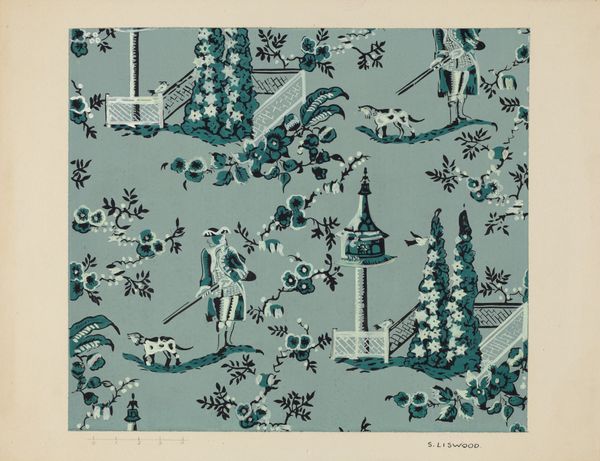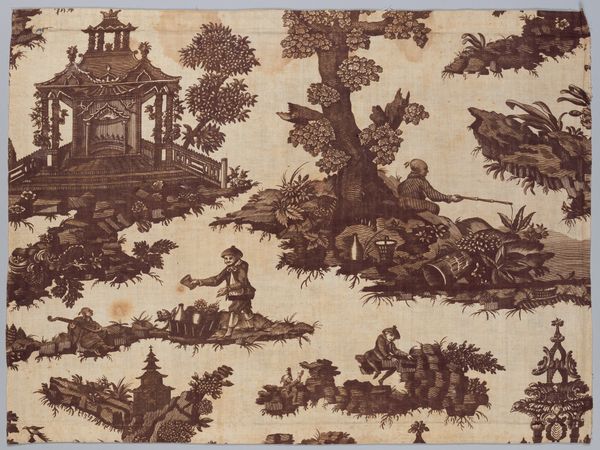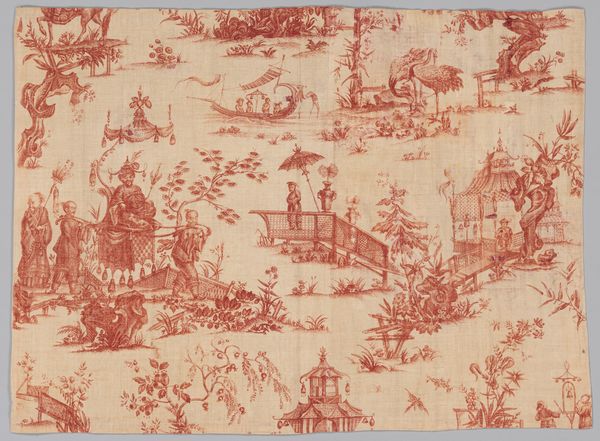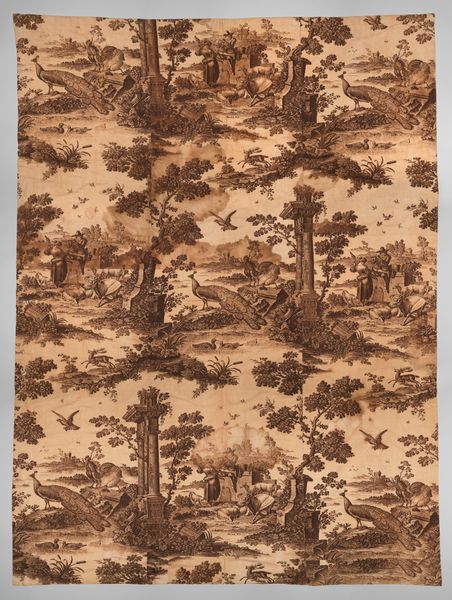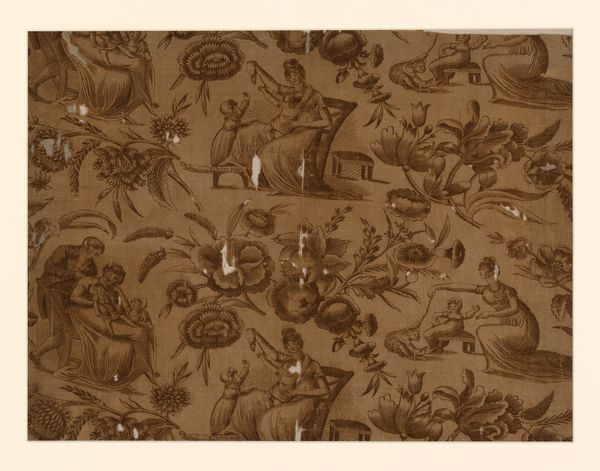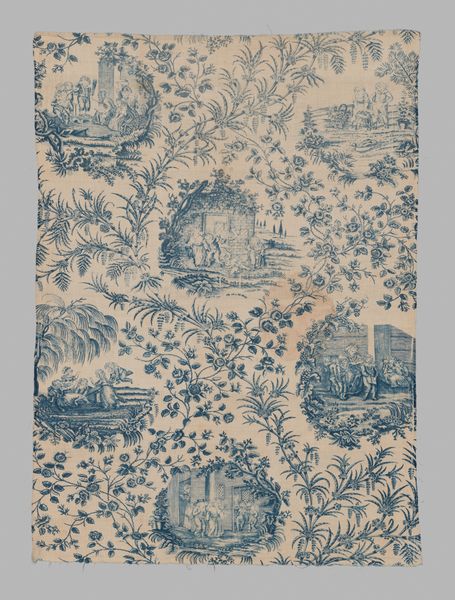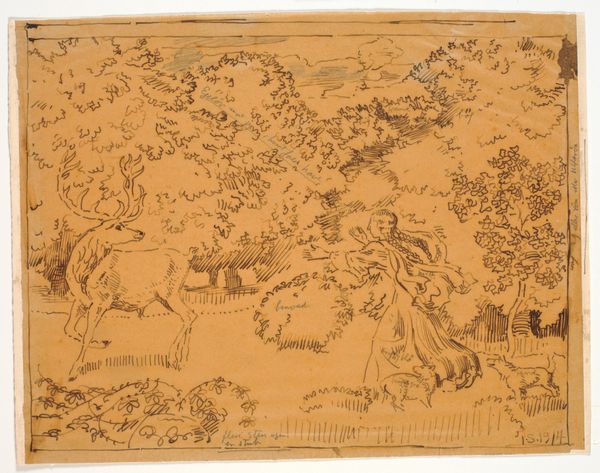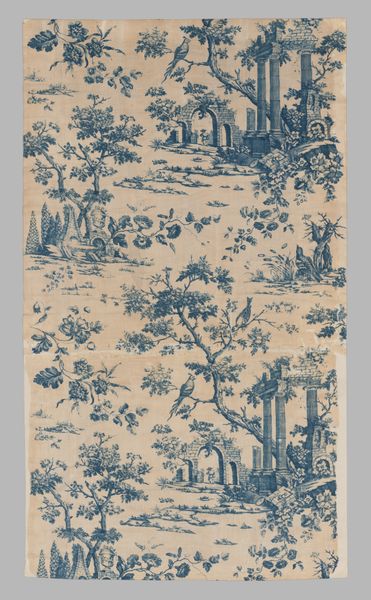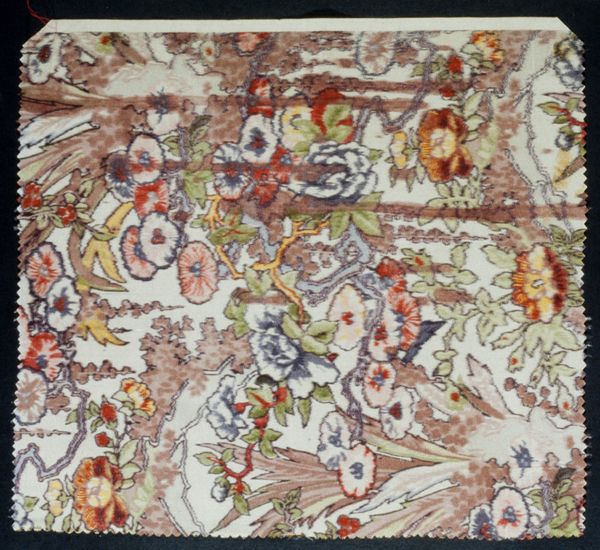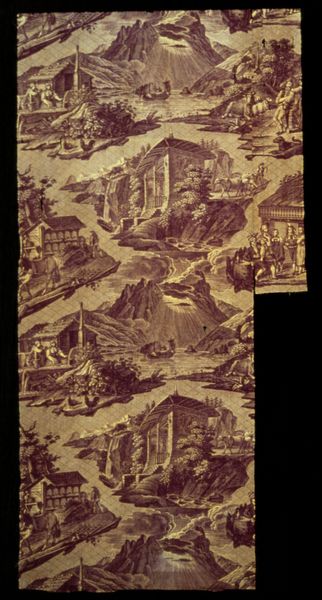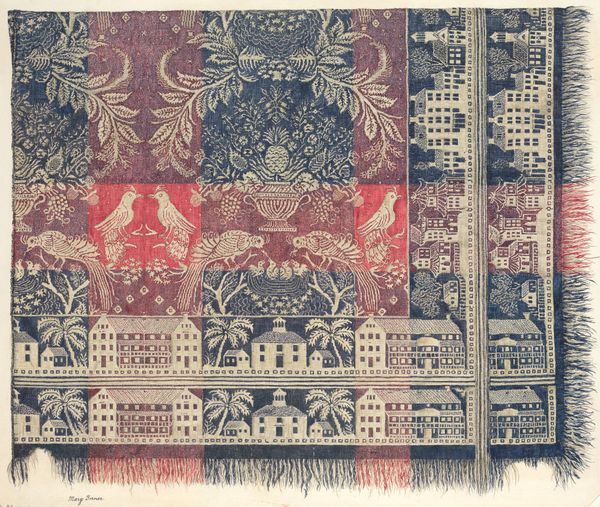
drawing, painting, watercolor
#
drawing
#
painting
#
pattern
#
landscape
#
watercolor
#
orientalism
#
genre-painting
Dimensions: overall: 22.5 x 30.2 cm (8 7/8 x 11 7/8 in.) Original IAD Object: 14 7/16" repeat
Copyright: National Gallery of Art: CC0 1.0
Curator: Sober, almost monochromatic… a repeating pastoral scene but somehow unsettling? Editor: This is "Wallpaper," a watercolor and drawing work from around 1939 by Moses Bank. What feels unsettling to you? Curator: The regimented repetition combined with imagery alluding to the landed gentry. Men with guns, hunting dogs, stylized pagodas and flourishing foliage—symbols of power and privilege. It feels trapped somehow, despite its depiction of the outdoors. Editor: Precisely. Wallpaper, even landscape wallpaper, acts as a domestic boundary, reinforcing the idea of curated, controlled nature. Think of how ideas about orientalism often filtered through domestic spaces. The grey tones amplify that restrictive feel. Curator: It's a muted Orientalism. The scenes lack the bright colours you'd typically expect. What visual impact might it have on someone seeing this as a recurring element in a room? The lack of colour seems to be an attempt to create a serene environment that may have created the inverse sensation, especially around that period in time. Editor: Perhaps it was trying to conjure a specific idealized, perhaps nostalgic vision of the past and what they believe it represented. It is easy to read it as almost prison-like though. Considering its creation around 1939, its subdued tone takes on further weight. Were people looking to art for quiet escapism at a moment before yet another global war, or does this hint at deeper social anxieties? Curator: Perhaps both. The repeated motifs are symbolic: pagoda shapes, possibly representing cultural appropriation. The dogs represent both leisure and control. Even the blossoms—symbols of fleeting beauty—become part of a larger oppressive structure. It speaks volumes. Editor: Wallpaper so often is just dismissed as decor. Yet analyzing this work reveals so much about the embedded assumptions and biases of its time. I think the power lies in the capacity to use familiar imagery to spark necessary questioning about culture and history. Curator: Agreed. It has allowed a moment for reevaluation. Editor: Yes, to understand that these decorative arts can have a historical meaning, also to provoke thought through images about critical perspectives of social roles and ideologies.
Comments
No comments
Be the first to comment and join the conversation on the ultimate creative platform.
